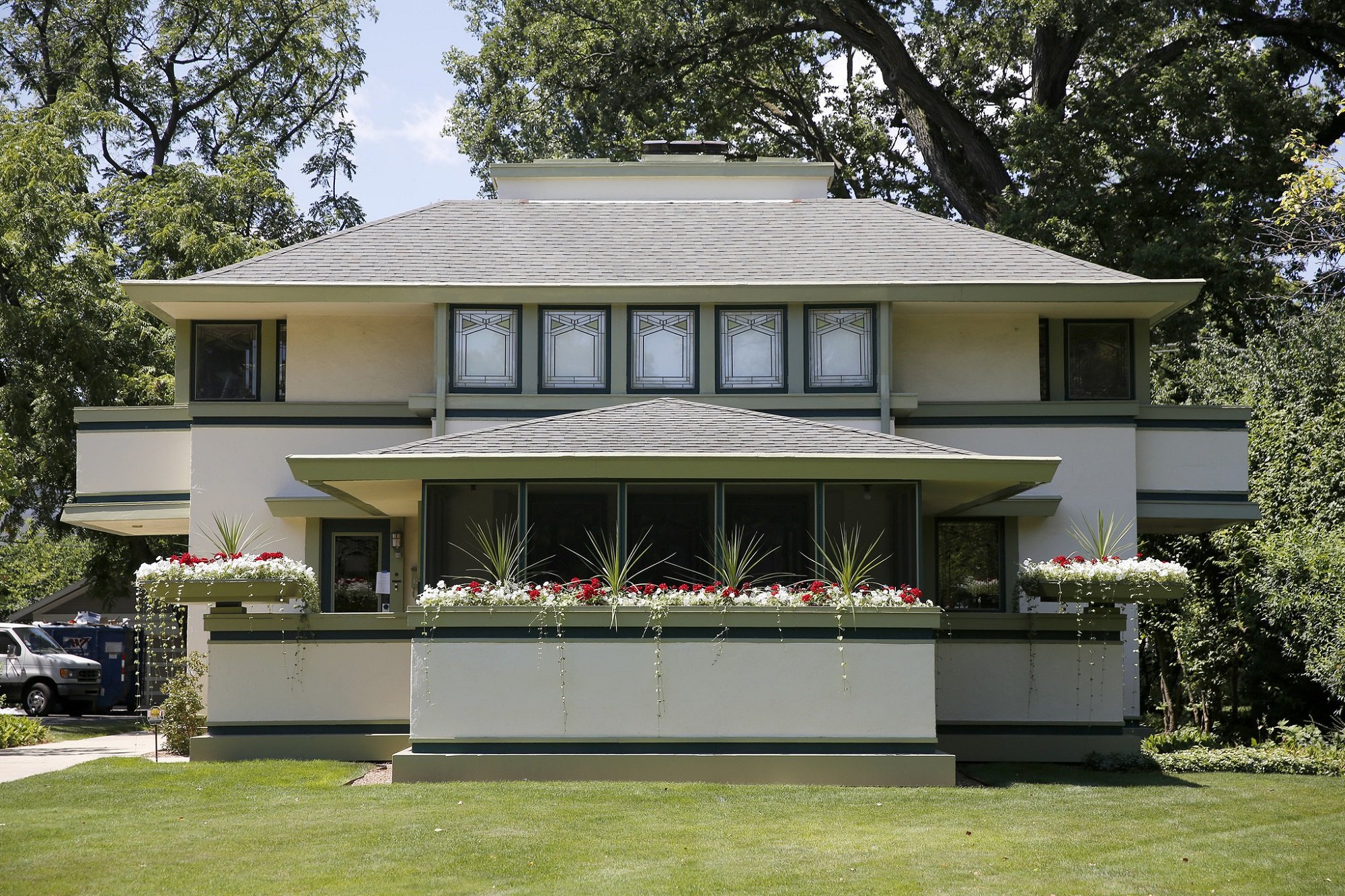#11995. Elegant Prairie Style Facade: Horizontal Lines and Natural Harmony
Before us stands a magnificent example of Prairie School architecture, developed by Frank Lloyd Wright in the early 20th century. This two-story house features all the classic elements of the style: horizontal lines, projecting eaves with wide overhangs, a low-pitched roof, and a characteristic central elevation.
The facade demonstrates strict symmetry and emphasizes horizontality through accented ribbon windows on the second floor with geometric stained glass patterns. Particularly noteworthy are the five central second-floor windows with ornamental details typical of the Prairie style, creating the effect of partitions. The first floor features wide panoramic windows that enhance the connection between interior spaces and the surrounding nature.
The color scheme of the facade consists of a restrained palette: white walls with green decorative elements and dark window frames create an elegant contrast. Special charm is added by the floral compositions in the balcony boxes on the first floor, where bright red and white flowers enliven the strict geometry of the facade.
When designing your own home, several techniques can be borrowed from this style: horizontal division of the facade with decorative bands, use of projecting eaves to create shade and protection from precipitation, application of geometric ornaments in window design, and integration of greenery into the architecture through balcony boxes and terraces.
